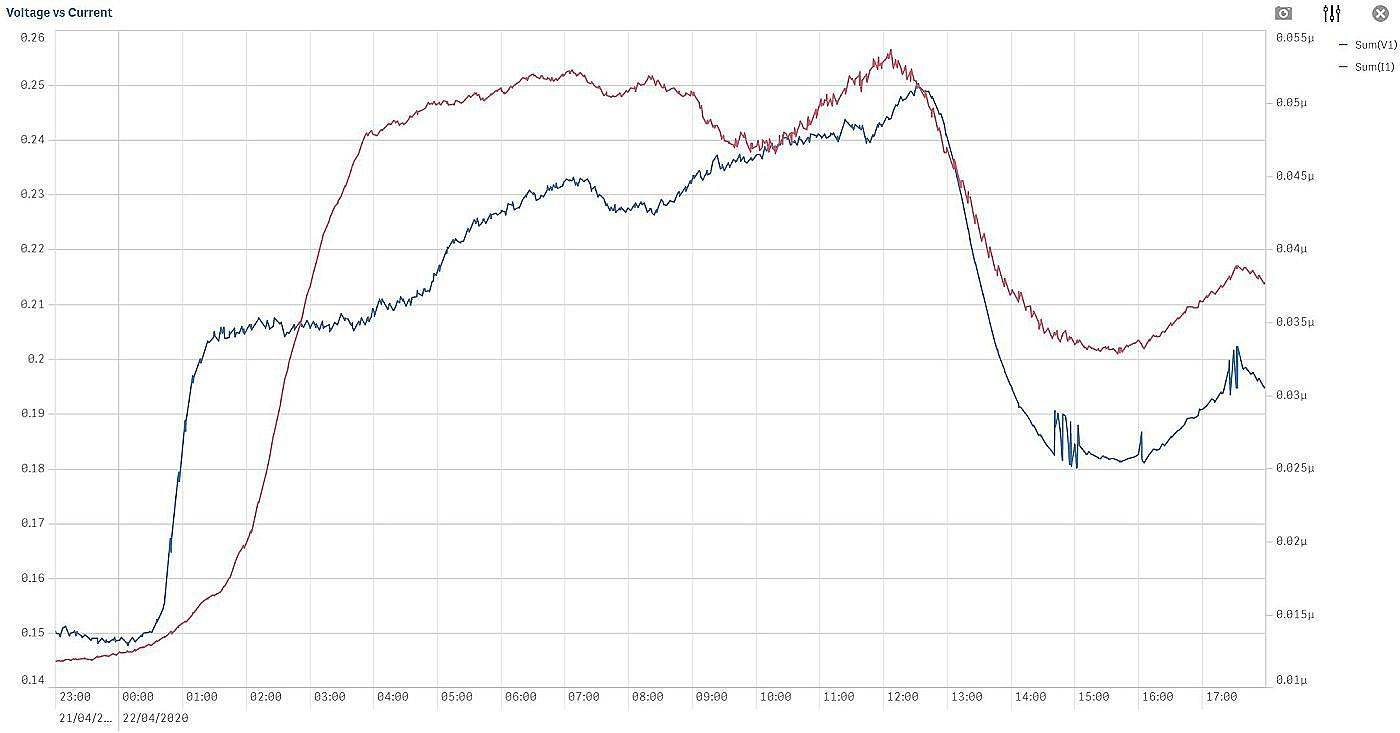Dumping water at the base of a brick sitting in a tray - as we have found out - creates a very fast capillary rise, generating a lot of change quickly. Because most old houses are not sitting in water (except Venice), but rest on damp soil, we also wanted to analyze in detail the movement of moisture from the soil into the brickwork through natural evaporation, in conditions when capillary absorption is insignificant.
Evaporation from the Soil
This test setup consisted of 4 bricks on top of each other sitting on soil, a 120 mm layer of soil mixed with some sea sand, which we could wet from the bottom in a controlled fashion. Thus the bricks could only get wet from the soil, simulating the real wetting process of old buildings.
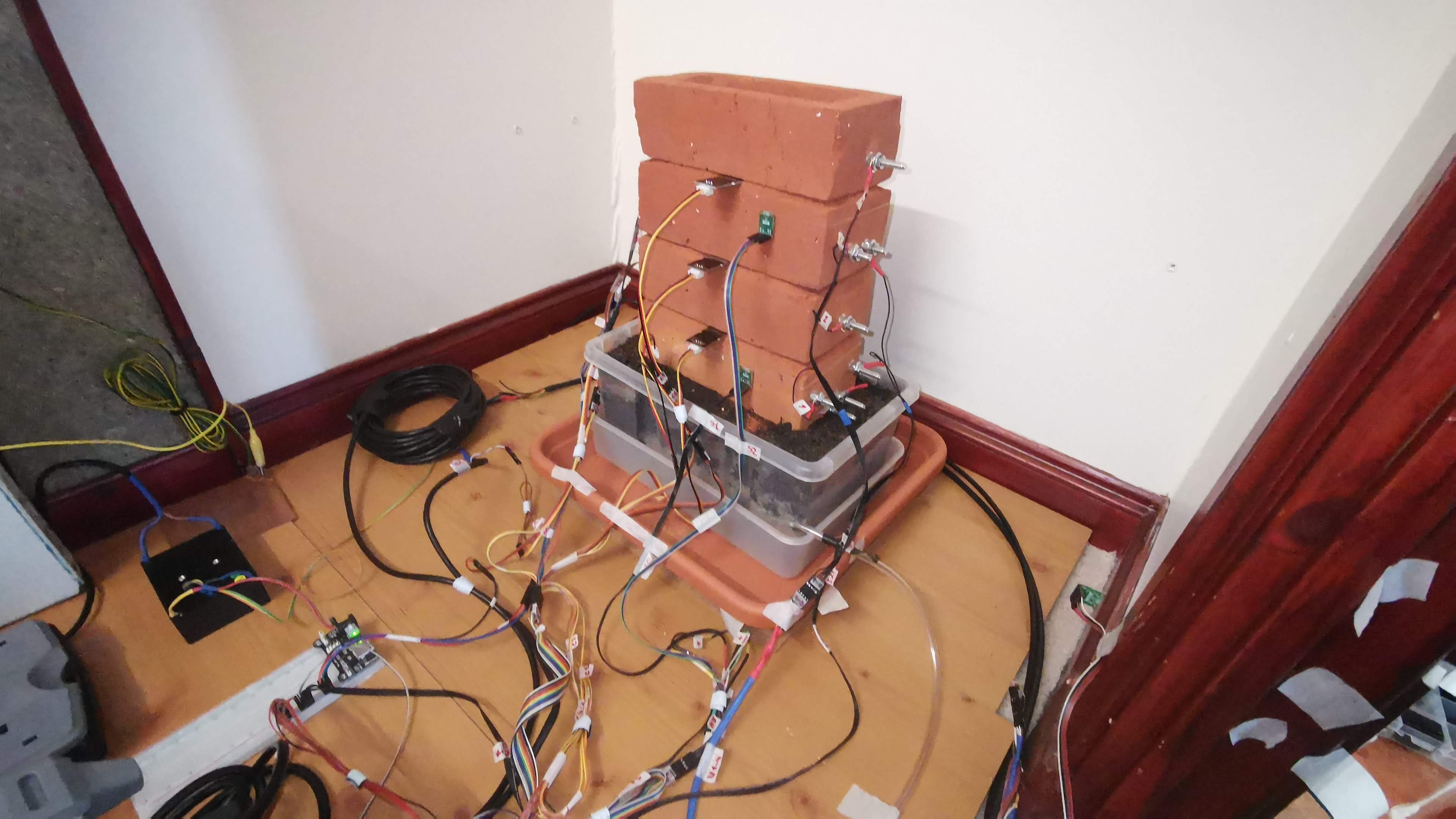
The experimental setup with bricks on soil
This lead to further interesting discoveries, clarifying the relationship and inter-dependency between humidity and electrical parameters such voltages and currents.
Voltages and currents move (rise and fall) together
Most of the time, when the masonry is not saturated with water, the voltages and currents in damp brickwork move together. This can be seen on long-term graphs covering several days...
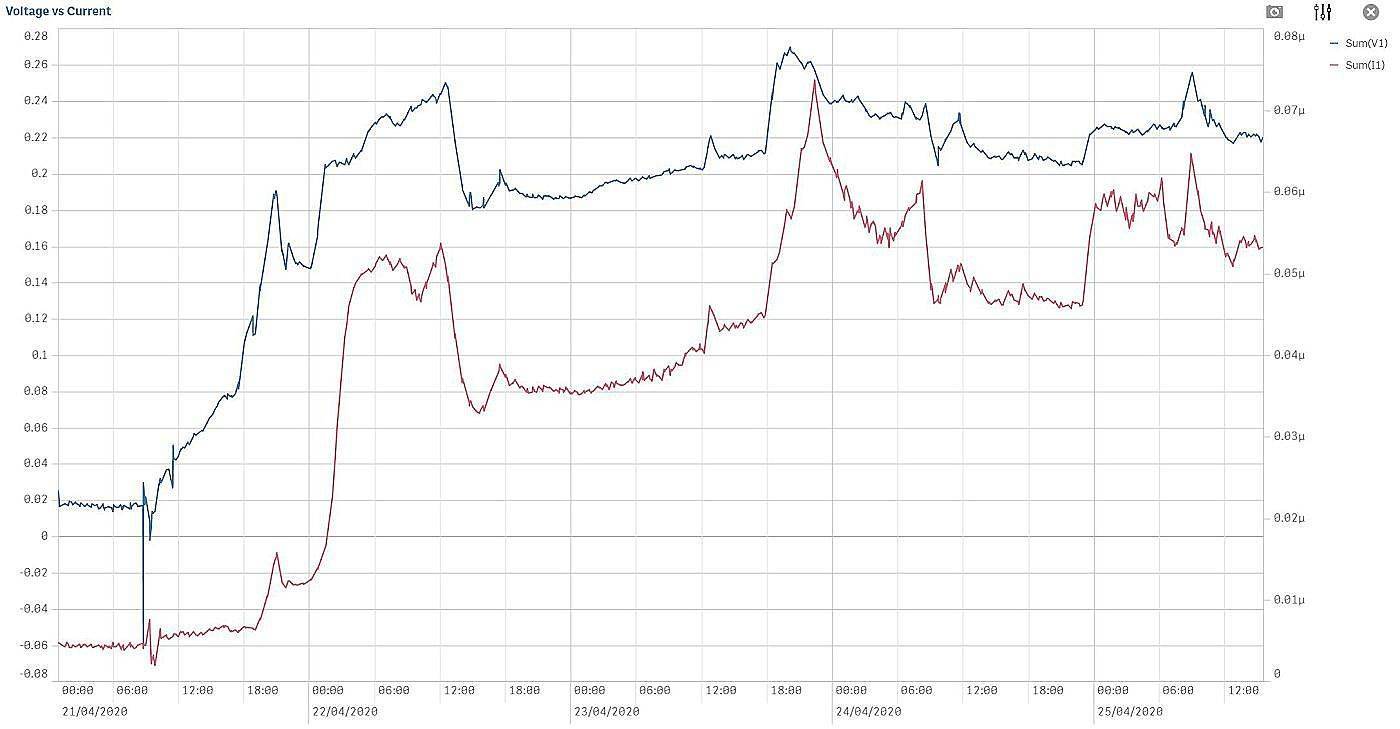
The voltage and current graphs are moving together
... as well as on short-term graph sections covering just a few hours.
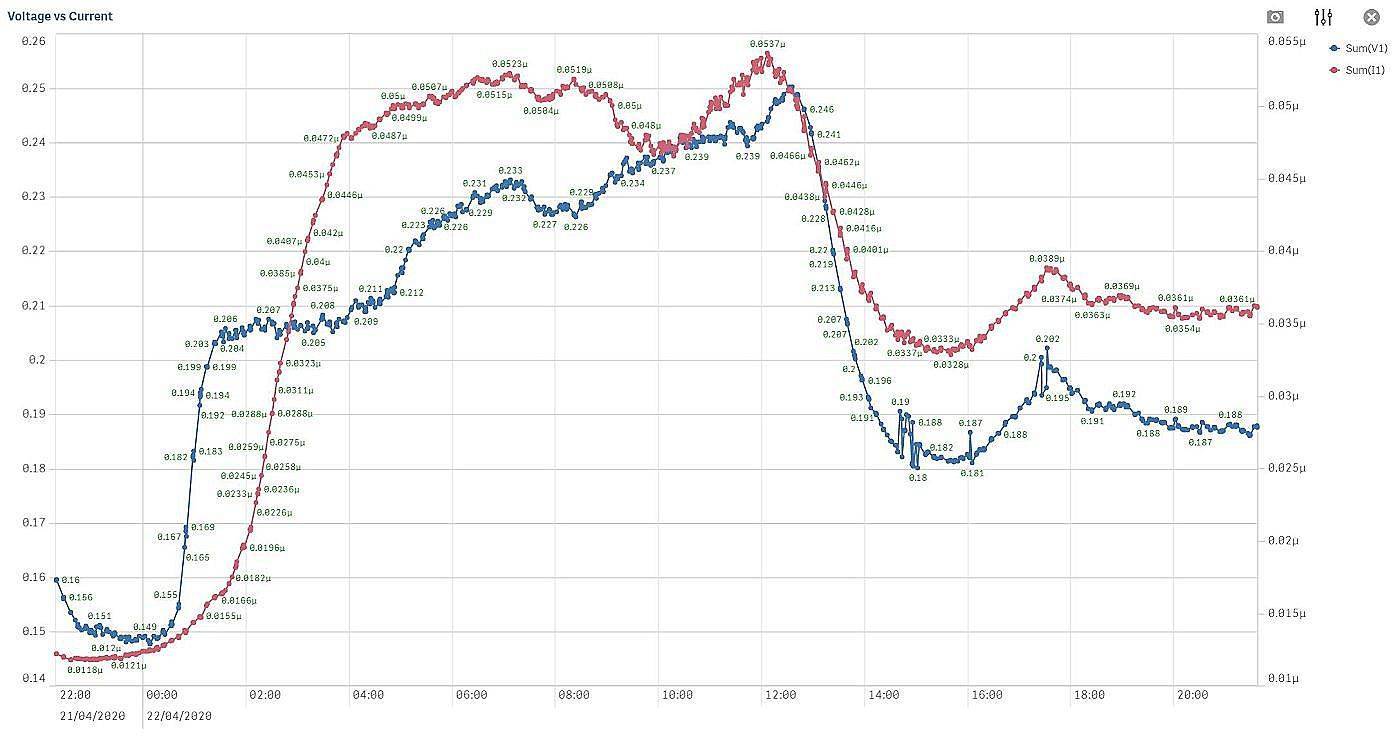
Humidity vs. voltage/current changes
An even more interesting discovery is, that after any significant voltage or current change, humidity inside a damp brickwork also changes. In other words, electrical effects in damp masonry CONTRIBUTE to the movement of moisture.
Here are some examples: below is shown the change of moisture inside a damp brick during a 2 day period. As a result of moisture evaporation from the soil, the humidity inside the brick has increased from about 69% to 83% (purple line).
The change of humidity has been preceded by changes of the current (green line). The current moved first, followed by a "mirrored" movement of humidity about 30-90 minutes later.
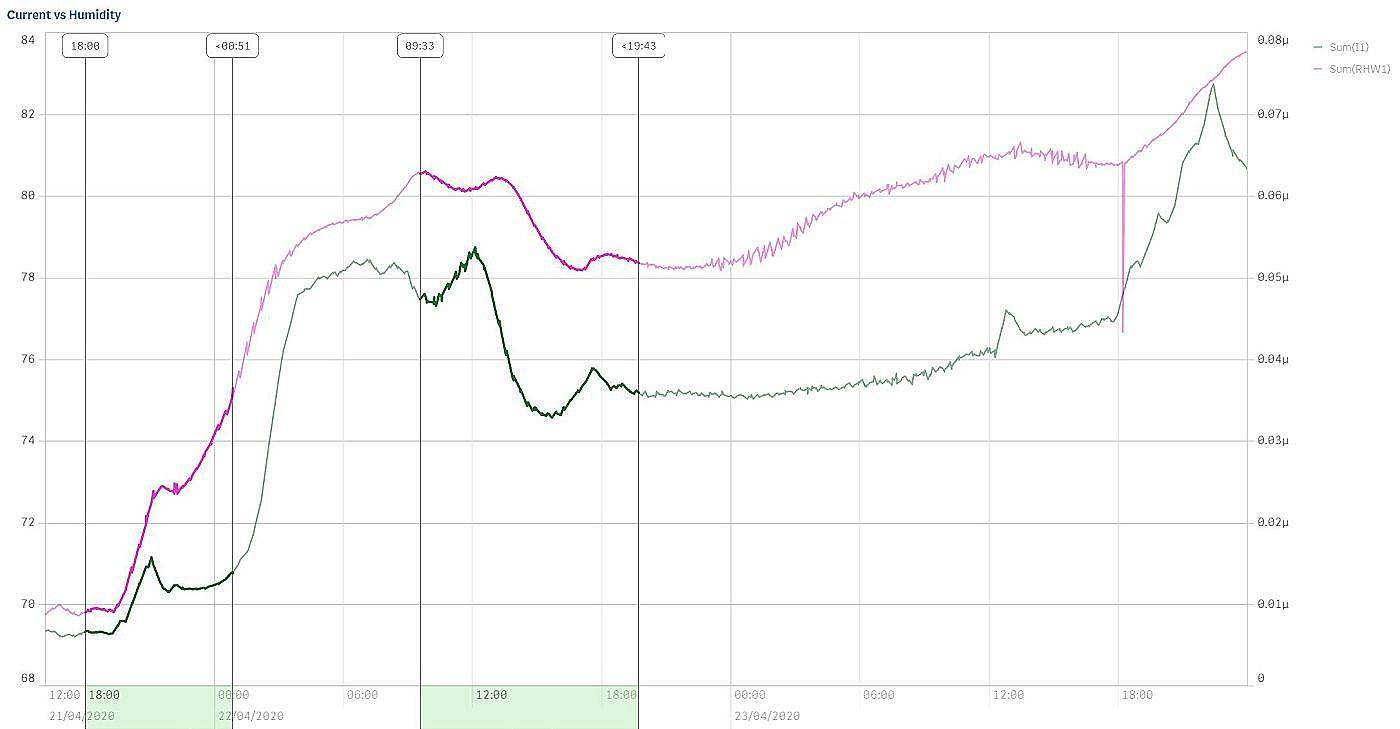
Change of moisture in damp brickwork during a 2-day period
If we examine more closely the two highlighted sections - one of them showing an overall increase, the other one an overall decrease of moisture - the inter-dependency of these variables and their timing becomes much clearer.
Section 1: shows an overall increase of humidity from 70 to 75% (purple line). This humidity increase has been preceded by a change of current (green line) - a with some peaks and valleys - during which the current has increased from about 70 to 160 nano amperes (nA).
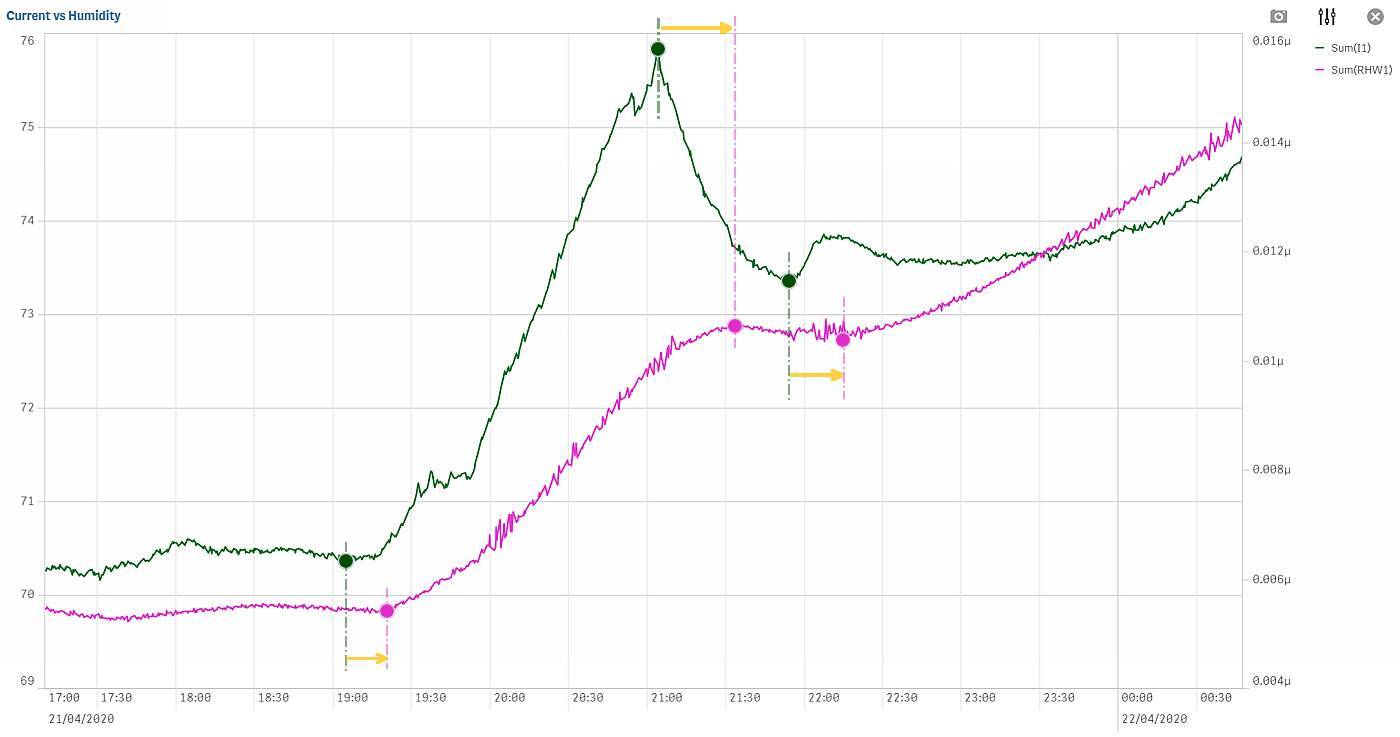
Section 1: an increase of the current (green) is followed by an increase of the humidity (magenta)
Section 2: shows an overall decrease of humidity from about 81 to 78% (purple line). This decrease was again preceded by an overall decrease of the current (with peaks and valleys), the humidity inside the brickwork also decreasing 30 to 90 minutes later.
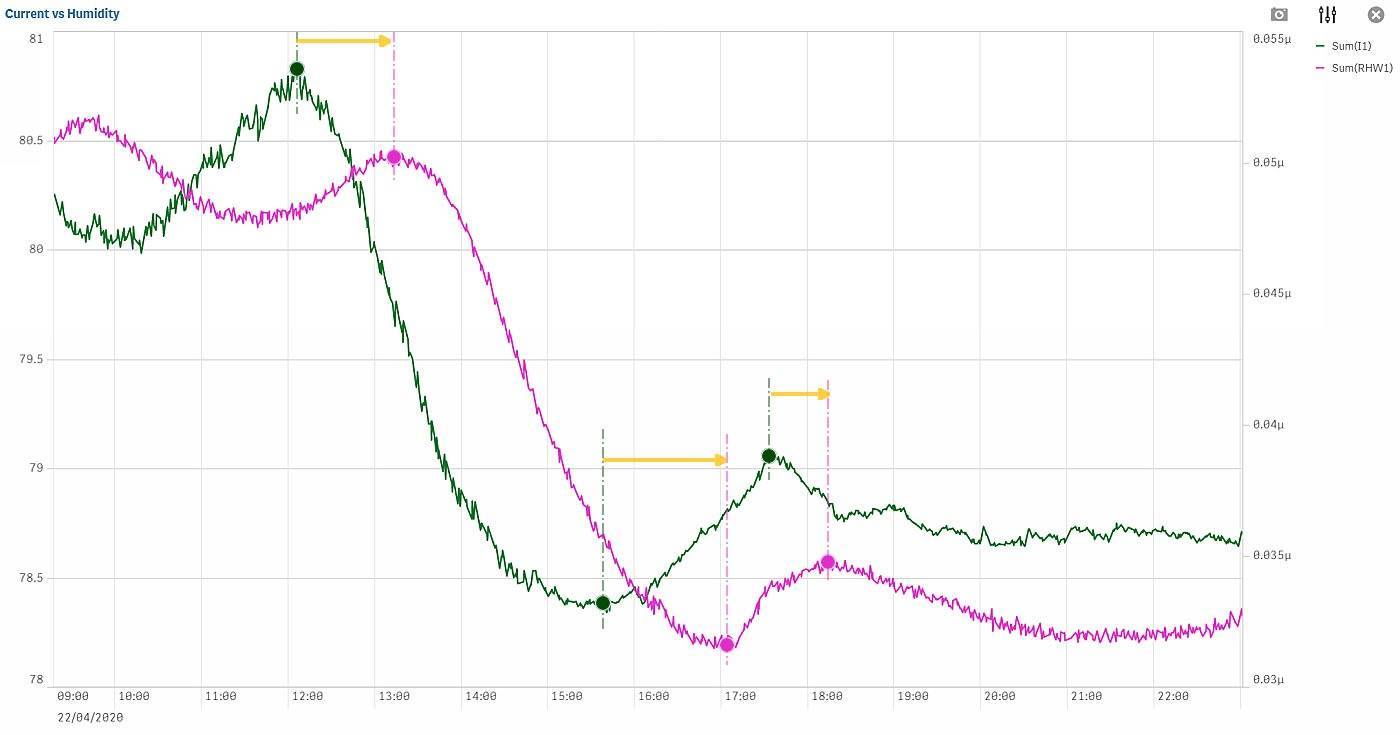
Section 2: a decrease of the current results in a decreases of humidity
We were able to confirm the above finding throughout a number of experiments performed with different setups and humidity levels.
Conclusions
From the above we can conclude:
- There is a clear connection between humidity movement and the electrical phenomena (voltages and currents) present in damp masonry.
- Humidity movement follows the movement of voltages and currents with a lag of about 30-90 minutes.



